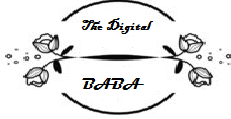
For cryptocurrencies like Bitcoin, blockchains are essential for enabling a secure and decentralized record of transactions. By ensuring the security and accuracy of a data record, the blockchain’s innovation fosters trust without the need for a responsible third party. They are frequently managed through peer-to-peer networks as a publicly distributed ledger, with nodes adhering to a protocol to communicate and validate new blocks. The development of Tron dApps is advancing the sector by securing the default applications. They represent a robust, fault-tolerant distributed computing system. Digital applications (dApps) are computer programs used for social media, banking, and gaming that run on a blockchain or other computer network. With the introduction of Ethereum, blockchain underwent a significant transformation.
Since the introduction of smart contracts and dApps, Ethereum has completely dominated the blockchain market with no real rivals. In or around 2018, Justin Sun developed and released the Tron Blockchain. The code base for Tron was derived from Ethereum and written in Solidity. Because of this, Ethereum and Tron were compatible with one another on all levels. By creating dApps on the Tron blockchain, users can access free digital content and easily and cheaply share it with others. To learn more, delve deeply!
What is the latest craze in Tron dApp Development?
TRX is the recognized digital currency of the Tron Blockchain (Troinix). It can be purchased or traded on reputable cryptocurrency exchanges like Binance, Kraken, etc. One of Tron’s main advantages is that it processes a significantly higher number of transactions per second than Ethereum and Bitcoin. 2000 TPS are processed on the Tron network, compared to 6 TPS and 25 TPS for Bitcoin and Ethereum, respectively.
Types of TRON Tokens
The cryptocurrency TRX from TRON is available for users to buy and sell on several reliable exchange platforms. Because Tron is not a typical PoW token, it cannot be mined by regular users to create dApps. On the blockchain, users of the TRON network can create their own tokens for any purpose, such as a utility token or as money for a DApp. Similar to Ethereum’s ERC20 tokens, TRON has its own set of tokens, which are as follows:
Token TRC10
The three types of TRON cryptocurrencies that the network creates and releases are TRC20 Tokens, TRC10 Tokens, and TRC 10 Tokens. The TRON blockchain natively powers the TRC10 technical standard, independent of the TRON Virtual Machine. By investing 1024 TRX, any TRON network user can create their TRC10 token. They can get aid in this from Tron dApp development company.
When creating a TRC10 token, the user must enter information about the token, including its name, market capitalization, the total number of tokens, the exchange rate to TRX, how long it will be in circulation, etc. Developers can easily sell their newly created tickets through an ICO because all cryptocurrency wallets that handle the TRX token also support TRC10. Since TRC10 passes are easier to produce and distribute than TRC20 tokens, they make up the majority of TRON-based tokens on the market. Due to the high demand for TRC10 tickets, new businesses engage the services of Tron dApp development companies to create dApps on the Tron blockchain.
Token TRC20
TRC20 The TRC20 protocol for smart contracts is used on the TRON blockchain. The protocol can be used to create tokens on the TRON blockchain. These coins are ERC20 compliant and run on the TRON Virtual Machine (TVM). TRC20 is superior to TRC10 because it employs smart contracts and is more secure.
Digital contracts, known as “smart contracts,” can be programmed to carry out automatically when the conditions are met, eliminating the need for a middleman. The production of a distinctive TRC20 coin is possible via a smart contract on the TRON blockchain network. WINk, SEED, and IGG are some of the most well-known tokens developed on or utilizing the TRC20 protocol. The main factors motivating business owners and organizations to pursue Tron dApp development are the high level of security and the ability of TRC20 tokens to create next-generation blockchain apps.
Benefits & Features of Building Dapps on the Tron Blockchain
Wallets, DApps, tokens, and other blockchain applications can all be made using the TRON blockchain. TRON-based passes are cutting-edge and built with the most recent blockchain technology. They handle transactions quickly, without intermediaries, and with the utmost security. TRON wallets are easy to make and can be customized to work with any existing system. With the aid of Tron dApp development, the user interface of our TRON tokens/wallets can be customized, making it easier to update the software. They also support Android, iOS, Windows, and other well-known platforms.
Access to data is unrestricted for users and token holders. The Tron Blockchain uses the Delegated Proof of Stake method to prevent the emergence of counterfeit chains by limiting who can confirm the main blockchain. Erroneous chains are eliminated using Proof-of-Stake (PoS) algorithms. Creating dApps on the Tron platform offers cost-effectiveness, high-end security, global access, multi-token support, and secure transactions. The gas fee for developing dApps on the Tron blockchain is relatively low compared to ETH and other well-known blockchain networks. You can adjust your TRON application to handle an increase in workload.
- Extremely efficient and able to handle high throughput 2K TPS: As was already mentioned, dApps built on the Tron blockchain can manage 2K TPS, outperforming Ethereum and Bitcoin. TRON’s high TPS enables it to deliver high throughput.
- Extreme scalability: The Tron Blockchain network can drive growing traffic and continuously adjusts.
- High-performance Storage Capacity: LevelD and KhaosDB, two distributed storage systems, are offered by Tron Blockchain.
- Compatibility with EVM: Because Ethereum and the Tron Virtual Machine are compatible, smart contracts that run on EVM can also run on TVM.
- Addendum for various languages: Programs written in Python, Objective-C, C++, and Java can run on the Tron Blockchain.
Conclusion
TRON has established itself as a formidable competitor to well-known blockchain infrastructures like the Ethereum blockchain (ERC20) and Bitcoin over the last few years. Since then, Tron dApp development has gained popularity. These justifications convince anyone to view TRON as a potential platform for creating dApps on the Tron blockchain. But it’s easier said than done. Unless you have extensive experience in the industry, it is advised to use a professional development agency for your blockchain development needs.


